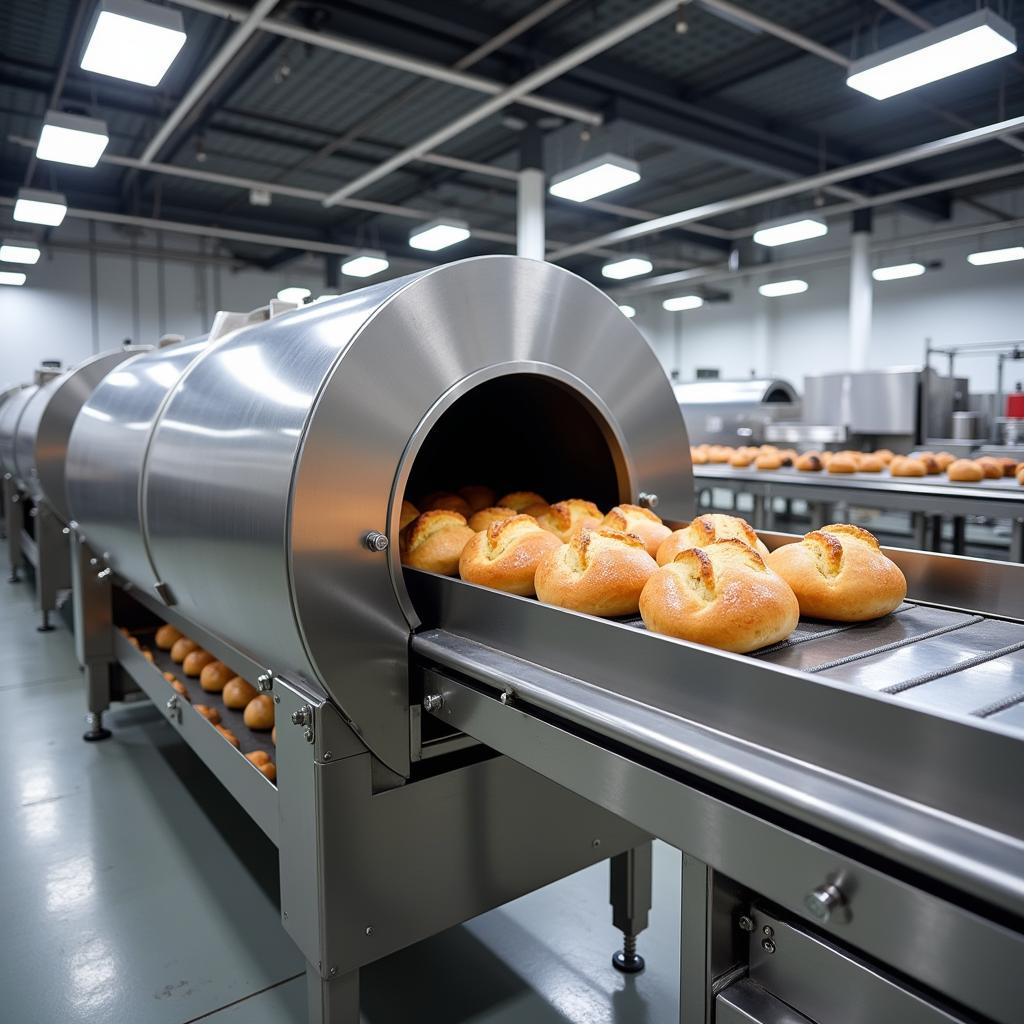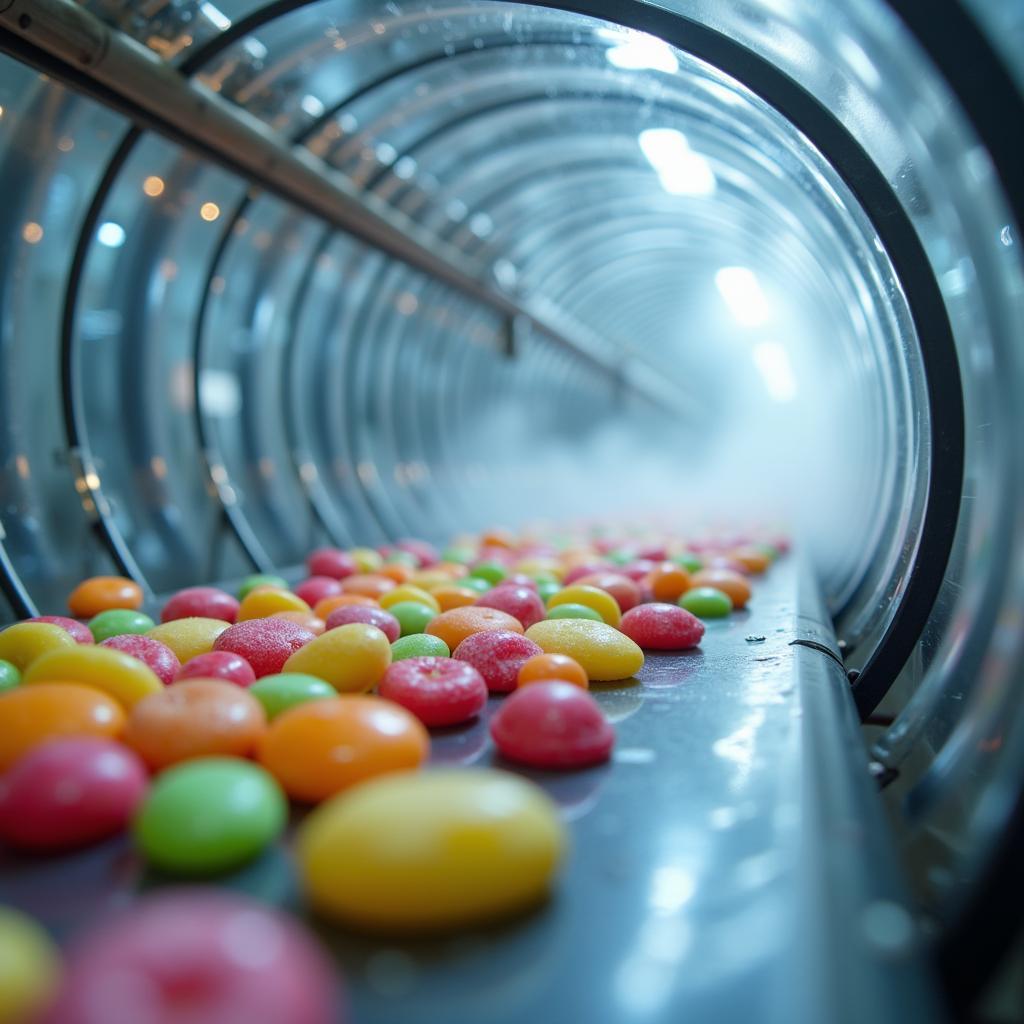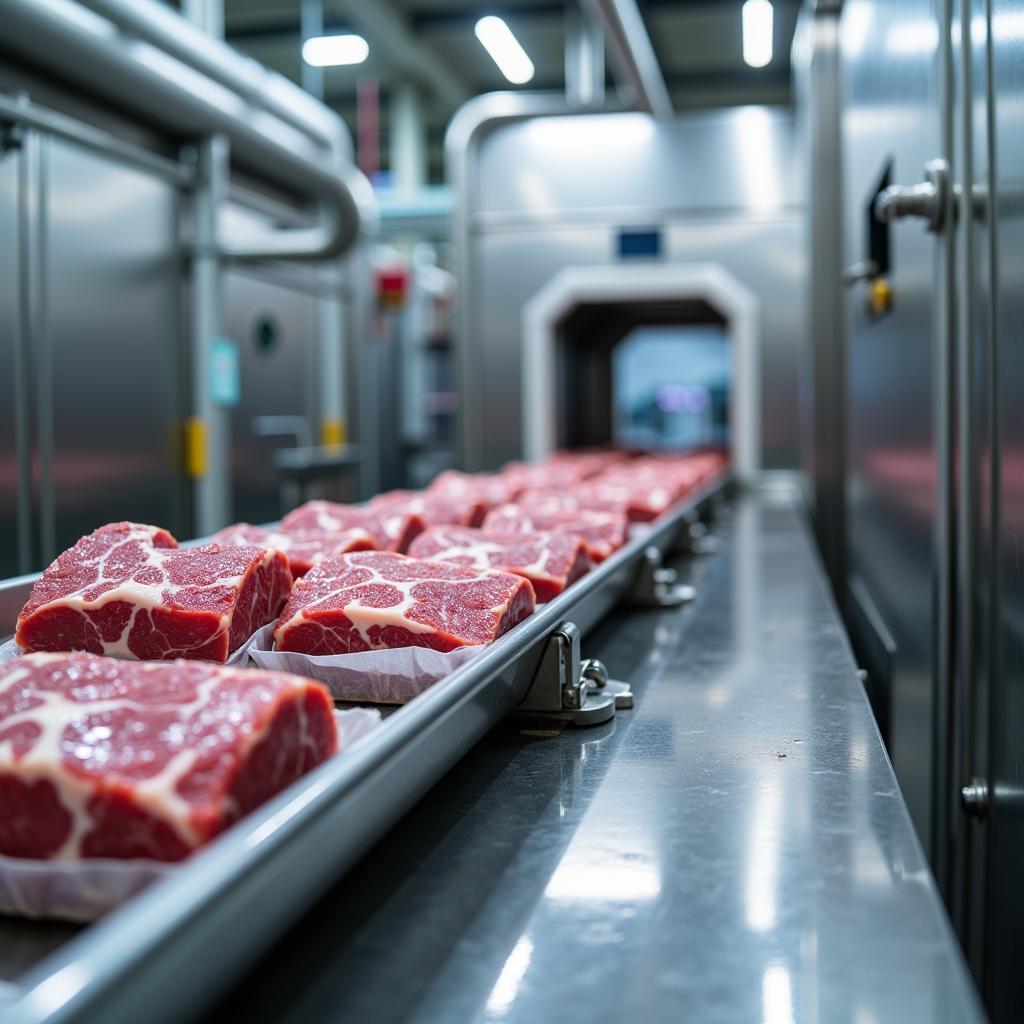Cooling tunnels are essential in food processing, bridging the gap between hot, freshly cooked products and safe, shelf-stable goods. They rapidly reduce the temperature of food, inhibiting bacterial growth and preserving quality. This process is critical for various food items, from baked goods and confectionery to ready meals and processed meats. Understanding how cooling tunnels work and their benefits can significantly improve food safety and efficiency in any food processing operation.
Understanding the Importance of Cooling Tunnels in Food Processing
Cooling tunnels are more than just big refrigerators; they are precision instruments designed for rapid and controlled temperature reduction. This rapid cooling is crucial for preventing bacterial proliferation, which thrives in the “danger zone” between 40°F and 140°F. By quickly moving food through this temperature range, cooling tunnels significantly minimize the risk of foodborne illnesses. Furthermore, controlled cooling helps maintain product quality, preserving texture, flavor, and appearance. Imagine a perfectly baked loaf of bread – a cooling tunnel helps ensure it stays perfect, preventing sogginess and maintaining its delicious crust.
 Cooling Tunnel in Bakery Production Line
Cooling Tunnel in Bakery Production Line
Types of Cooling Tunnels and Their Applications
Different foods have different cooling needs. This is why various types of cooling tunnels exist, each designed for specific applications. Spiral cooling tunnels, for example, are ideal for maximizing space efficiency, making them a popular choice for large-scale operations. They use a spiral conveyor belt to move products through the cooling chamber, allowing for a longer cooling time within a compact footprint. Another common type is the linear cooling tunnel, which utilizes a straight conveyor belt and is suitable for products requiring a shorter cooling time. These tunnels can be customized with different cooling methods, such as forced air, water mist, or cryogenic cooling, to suit the specific characteristics of the food being processed.
 Spiral Cooling Tunnel for Confectionery
Spiral Cooling Tunnel for Confectionery
Optimizing Cooling Tunnel Performance for Maximum Efficiency
Optimizing cooling tunnel performance is key to achieving optimal food safety and product quality. Factors like airflow, temperature control, and belt speed all play a crucial role in the cooling process. Proper airflow distribution ensures even cooling across all products, preventing hot spots where bacteria could potentially grow. Accurate temperature control allows for precise cooling to the desired temperature, preserving product quality and ensuring food safety. Furthermore, optimizing belt speed allows processors to fine-tune the cooling time to match the specific requirements of the product.
How Cooling Tunnels Contribute to Food Safety and Quality
The benefits of cooling tunnels extend beyond simply cooling food. They play a vital role in maintaining consistent product quality and ensuring food safety standards are met. By rapidly reducing temperature, cooling tunnels inhibit bacterial growth, significantly reducing the risk of foodborne illnesses. This rapid cooling also helps preserve the texture, flavor, and appearance of food, leading to a higher quality final product. For instance, in the production of chocolate, a cooling tunnel ensures the chocolate sets correctly, maintaining its glossy finish and preventing blooming. This attention to detail is what separates a good product from a great one.
 Linear Cooling Tunnel for Meat Processing
Linear Cooling Tunnel for Meat Processing
Cooling Tunnels Food Processing: The Future of Food Preservation
As technology continues to advance, so too will cooling tunnel technology. Innovations like cryogenic freezing and intelligent control systems are already shaping the future of food processing. These advancements offer even more precise temperature control and faster cooling times, further enhancing food safety and product quality. Imagine a future where food can be cooled almost instantly, locking in freshness and flavor like never before. Cooling tunnels are an integral part of that future, paving the way for safer, higher quality food products.
Conclusion: Embrace the Chill with Cooling Tunnels Food Processing
Cooling tunnels are indispensable in modern food processing, offering a crucial link between production and preservation. By rapidly and effectively reducing food temperatures, they ensure food safety, maintain product quality, and enhance overall processing efficiency. Whether you’re producing baked goods, confectionery, ready meals, or processed meats, understanding and utilizing cooling tunnels is key to staying ahead in the competitive food industry.
FAQ
- What is the typical temperature range for a cooling tunnel?
- How long does it typically take for food to cool in a cooling tunnel?
- What are the different types of cooling methods used in cooling tunnels?
- How do I maintain and clean a cooling tunnel?
- What are the key factors to consider when choosing a cooling tunnel?
- How do cooling tunnels contribute to extending the shelf life of food products?
- Are there any energy-efficient cooling tunnel options available?
Expert Insights:
- Dr. Emily Carter, Food Safety Specialist: “Cooling tunnels are a cornerstone of modern food safety practices, providing a critical control point for preventing bacterial growth and ensuring product quality.”
- John Miller, Process Engineer: “Optimizing cooling tunnel performance can significantly improve production efficiency and reduce energy consumption, leading to cost savings and a more sustainable operation.”
- Maria Rodriguez, Quality Control Manager: “Investing in a high-quality cooling tunnel is an investment in the long-term success of your food processing business, ensuring consistent product quality and protecting your brand reputation.”
Need support? Contact us 24/7 at Phone Number: 02437655121, Email: minacones@gmail.com or visit us at 3PGH+8R9, ĐT70A, thôn Trung, Bắc Từ Liêm, Hà Nội, Việt Nam.